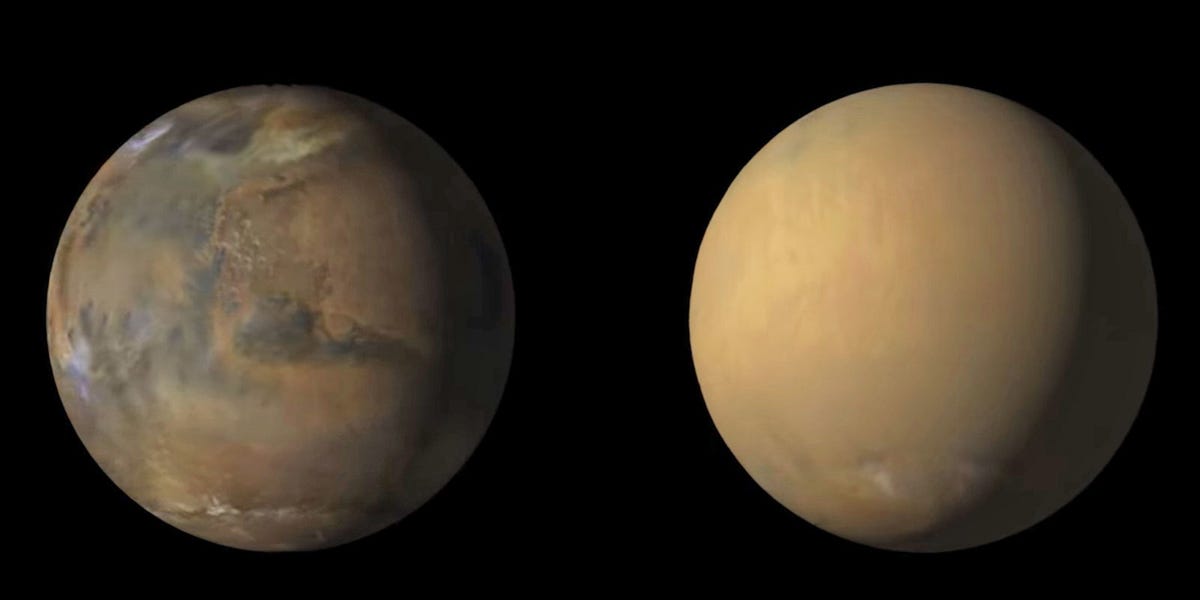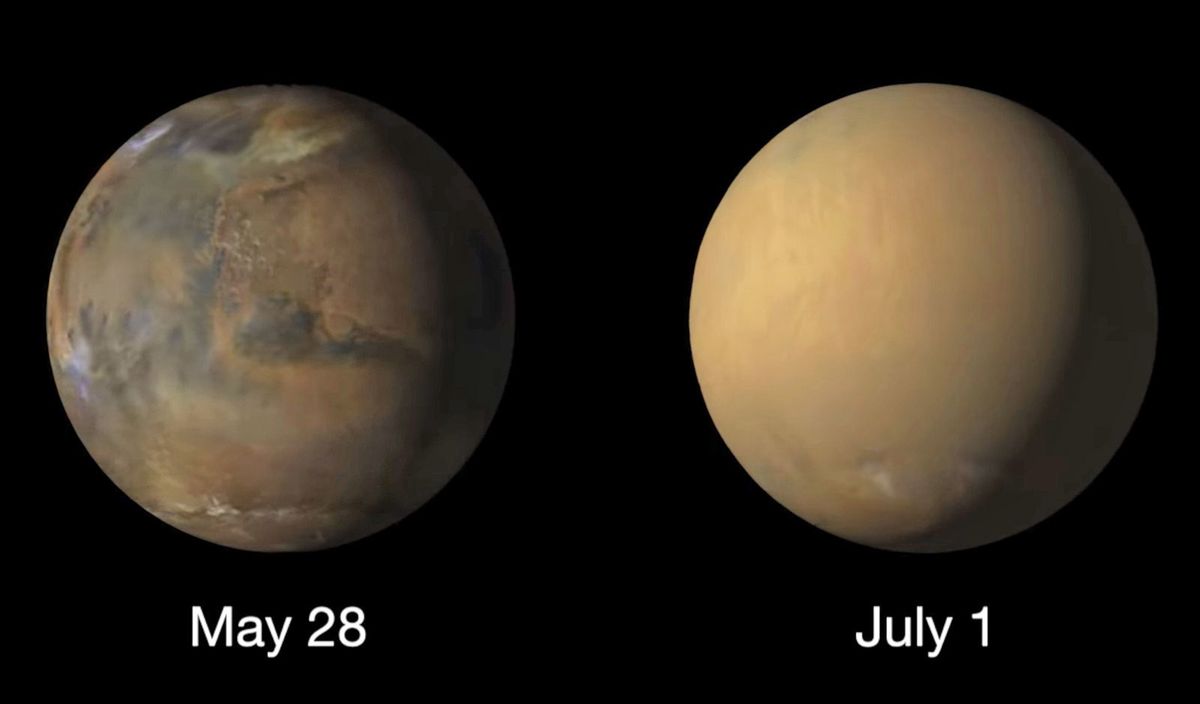
This before and after video of Mars is just stunning! The side-by-side movies shows how the ongoing dust storm has enveloped the Red Planet entirely, obscuring its surface on a planet-wide scale, as a dust storm continues to ravage the surface of the entire planet.
The view from May shows Valles Marineris chasms (left), Meridiani center, an autumn dust storm in Acidalia (top) and the early spring south polar cap (bottom). The view from July shows the same regions, but most of the surface was obscured by the planet-encircling dust cloud and haze.
HOW OFTEN DO DUST STORMS HAPPEN ON MARS AND WHAT’S THE BEST WAY TO SEE THEM?
Dust storms occur frequently on Mars, but global events that circle the entire planet appear every six to eight Earth years, which equates to three to four years on the red planet.
Dr Robert Massey, deputy executive director of the Royal Astronomical Society, advises on witnessing this extra-terrestrial weather event.
Observing Mars is always challenging, as it’s small, about half the size of the Earth, and at its closest is still around 34 million miles (55 million km) away.
It is easily visible to the eye as a bright red object in the sky, but seeing any detail requires a reasonable telescope and binoculars won’t show much.
Even with that, details are fleeting, and depend on a steady terrestrial atmosphere as otherwise turbulence blurs out the view.

This is why early Martian observers spent a lot of time making many sketches to try to map the planet’s surface.
A good time to look is when Mars is near its opposition, the point when the planet is opposite the sun in the sky and near its minimum distance from the Earth.
Opposition in 2018 is on July 27, and Mars’ closest approach is on 30 July.
As it gets dark in the evening, you should look for a bright red object in the southeastern sky.
With a decent telescope, observers can see the polar caps growing and shrinking and the dust storms described above. These can rapidly change from being local features to planetwide events.
The video is courtesy of the Mars Color Imager (MARCI) camera onboard NASA’s Mars Reconnaissance Orbiter (MRO).
Original Article:http://strangesounds.org/2018/07/mars-sandstorm-video-nasa.html
Watch More:Interplanetary Climate Change: Major Changes In Our Solar System
Watch More:Something Is Affecting The Entire Solar System: The Destroyer Approaches
Watch More:NAILED IT ! Ted Talks Speaker Talks Electromagnetism And The Affects Of Nibiru In PLAIN ENGLISH

2 Comments